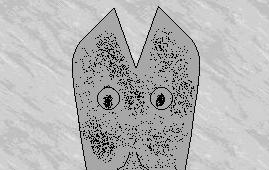1) What is a subprime mortgage?
2) How do subprime mortgages work?
3) Wow. You really worked that metaphor, didn’t you?
4) Okay. So, what happens to somebody with a subprime mortgage?
5) Basically, their homes are repossessed and they end up living on the street?
6) Surely, this won’t affect a lot of people?
7) Well, okay, that’s –
8) Sorry. Okay, that is a lot of foreclosures. Still, how do a few…million personal tragedies result in a threat to the economy as a whole?
9) Could you repeat that in English?
10) Okay. That was…umm…helpful. Now, could you please explain it in even simpler layman’s terms?
11) So, the rotten debt has eaten through many of the planks of the American economy (see, I do so appreciate poetic metaphor!) – are we looking at a complete economic collapse?
12) But, if taxpayers are ultimately on the hook for the losses they incur, what risks are the entrepreneurs really taking?
1) What is a subprime mortgage?
According to the Food and Drug Administration, subprime refers to cuts of beef that are less than the best quality. Subprime mortgages, therefore, are the cow’s lips of bank loans.
2) How do subprime mortgages work?
Imagine you want to buy a doll’s house for your child’s birthday, but you don’t have the money. Your friend offers to lend you $100. You warn your friend that you’ve got a minimum wage job as a lap dancer at Burger King, so you may not be able to pay back the loan right away. Your friend tells you not to worry, that the interest rate on the mortgage is so low that it’ll feel like he’s paying it to you. You may be dubious, but you really want that house, so you agree. The next day, your friend drops by with two brick walls masquerading as human beings and tells you that the interest rate on the loan is now 30 per cent daily, starting today. Subprime mortgages are exactly like that, only with one to five thousand times the amount of money. And, no friends are involved.
3) Wow. You really worked that metaphor, didn’t you?
In times of economic uncertainty, metaphors are the least expensive form of edutainment.
4) Okay. So, what happens to somebody with a subprime mortgage?
They learn to let go of their attachments to material things.
5) Basically, their homes are repossessed and they end up living on the street?
It doesn’t sound as harsh when you explain it with a Buddhist aphorism.
6) Surely, this won’t affect a lot of people?
Oh, certainly not. Two, two point four million families will have their mortgages foreclosed. The good news is that only about a million of those families will actually end up living on the street – I love a story with a happy, ending, don’t you?
And, hey – what’s with the declarative statements in the form of questions? Just putting a question mark at the end of a sentence doesn’t make it a true question, you know. Or, should I say, you know?
8) Sorry. Okay, that is a lot of foreclosures. Still, how do a few…million personal tragedies result in a threat to the economy as a whole?
Allow me to let a former trader at Bear Stearns (who has asked for anonymity out of fear of being lynched), explain the situation: “It was only logical to bundle teaser loans
with ARMs for NINJAs into SIVs – our risk assessment models were solid. Unfortunately, we could not maintain the opacity of our securitization, resulting in devastating model misbehaviour.”
9) Could you repeat that in English?
Does nobody appreciate poetry any more? Okay, I’ve added rollovers to explain some of the more exotic terms.
10) Okay. That was…umm…helpful. Now, could you please explain it in even simpler layman’s terms?
Sure. Shiny subprime loans – no payee back. Mortgage brokers sell them with other securities, but no tellee peoples who buyee them. Now, everybody owns debt that will never be payeed back. Savvy?
11) So, the rotten debt has eaten through many of the planks of the American economy (see, I do so appreciate poetic metaphor!) – are we looking at a complete economic collapse?
No, no, no, no, no, no, no, no, no, no, no, no, no, no, no, no, no, no, no, no. Well, maybe. If there is a run on banks, we could be dancing on the razor’s edge of the abyss of a depression (don’t try to out-metaphor me, question boy!). However, the Fed has already started bailing out the banks (Bear Stearns executives really earned their $39 billion dollars in bonuses on that one!), so, as long as the government doesn’t go broke (and, since it prints the money, what are the odds of that happening?), the economy will limp along.
As Treasury Secretary Henry M. Paulson, Jr. truly said: “The genius of our system is that it recognizes that if you’re going to give entrepreneurs and investors the chance to succeed and reap the benefits of their risk-taking, they also need the freedom to fail.”
12) But, if taxpayers are ultimately on the hook for the losses they incur, what risks are the entrepreneurs really taking?
What? A system can’t show genius in more than one way?


